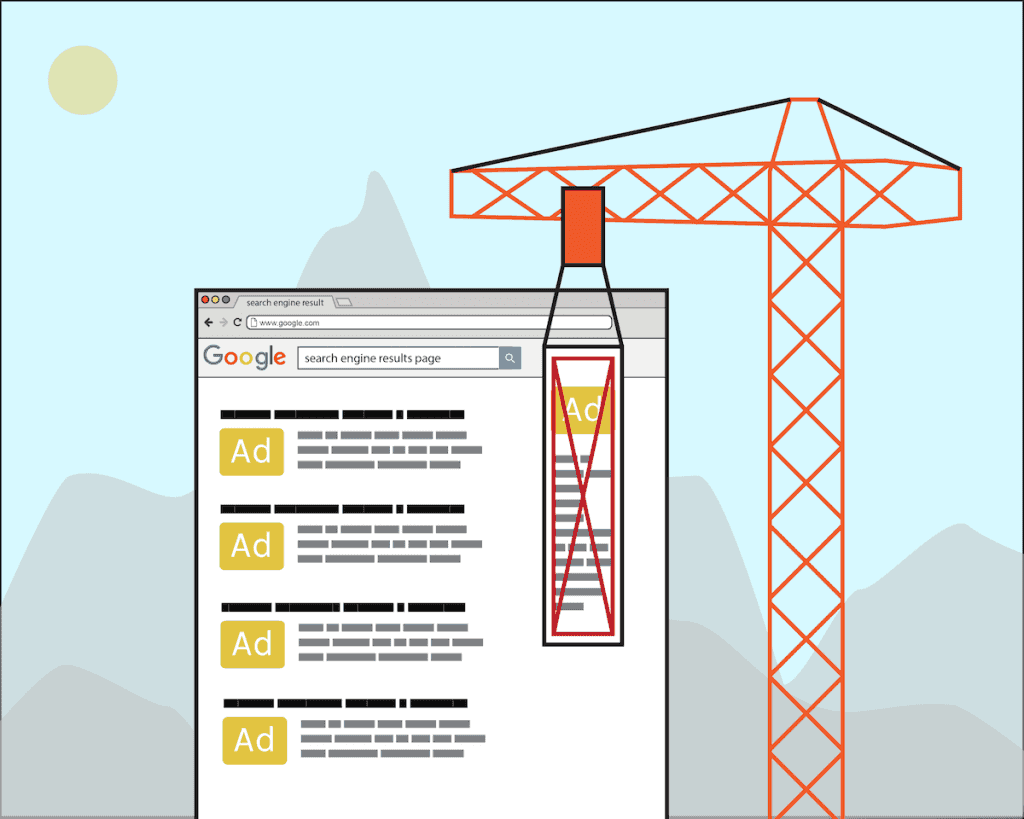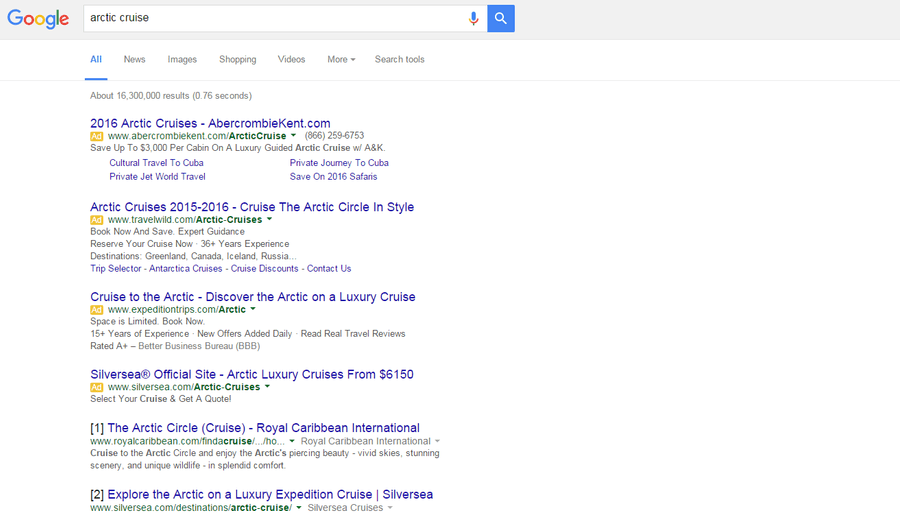Everything You Need to Know About the New Google SERP Layout

Well, well, well. It’s the same old story. An update to the Google search engine results page (SERP) is inevitably accompanied by an industry-wide freak-out. On February 18th, Google eliminated all right-column ads and made four ads at the top of the SERP standard. Of course, the frenzied articles and reactions are justified—Google just made a big change that will affect paid ads and organic search alike. Still, a word of advice: Stay calm.
Remember the Mobilegeddon of April 2015? Google unleashed a new algorithm that boosted mobile-friendly websites in mobile search results. Obviously, this was an important update—but the name “Mobilegeddon” was, in hindsight, a tad hyperbolic. After all, Merriam-Webster defines an Armageddon as “the site or time of a final and conclusive battle between the forces of good and evil.” I think we can all agree on the fact that it doesn’t really apply here.
Nevertheless, business owners, SEO/PPC lovers, and digital marketing agencies should all be familiar with the new Google search results page and how to move forward in a post-Google SERPocalpyse world. (Not as catchy as Mobilegeddon, I know. I tried.)
Get the story straight: What the new Google SERP looks like
Previously, the Google search engine results page had 1-3 top ads and a slew of right-column ads. While Google tested four ads at the top of some results pages for a while, it wasn’t until February 18th when they became commonplace. At the same time, right-column ads disappeared from the SERP forever.
Google publicly asserted that the elimination of right-column ads was a step towards mobile-first design, as the mobile SERP didn’t show those ads.
Now, the new Google SERP typically has four ads at the top and three ads at the bottom. The only features that show in the right-column are knowledge graphs and paid shopping blocks when applicable. Because the new SERP highlights up to 7 ads (instead of up to 11 like before) and it pushes down organic results further below the fold, both PPCs and SEOs are understandably stressed out by the increased competition.
Furthermore, there’s some clamor over how Google’s move to making ads more visible than ever before—and by default, organic results less visible—is a hypocritical move. After all, the Google Webmaster Guidelines’ first basic principle of quality is to “make pages primarily for users.” Are the top four ads on the new SERP truly intended to help the user, or is it a greedy move by Google to make more ad revenue?
We know why right-column ads disappeared, but it’s hard to say what the motives were for changing the other ad formatting. It’s advised to not waste brainpower stressing out over this and instead do more research on the changes. I recommend checking out this comprehensive Moz post and this highly informative Search Engine Land FAQ.
Advice from paid search & SEO pros
Okay, so now you have the lowdown on the Google SERP updates, what do you do now? Never fear. Search & Social Advertising Senior Manager Eric Yarnik and SEO & Search Advertising Analyst David Feldbaum are here to help.
For those of you wondering how the update will affect PPC, Eric has some words of wisdom.
“I expect to see a decrease in ad impressions with the removal of right-column ads, but those impressions didn’t have a high amount of clicks so hopefully there won’t be too much of an effect overall. I’m still unsure about how cost-per-clicks will be affected as time goes on, as competition might increase for those top spots. I’m also excited to have more ads showing ad extensions as well, since most of the time extensions didn’t show on the right side.”
As for how to adjust paid search tactics, Eric advises everyone to monitor metrics closely and be proactive in making adjustments.
Now, what about SEO?
“Essentially, four ads on top pushes organic down and potentially even down below the fold when you consider Google knowledge graphs. This could have a strong negative effect on click-through-rate as users’ impressions will be catered to above-the-fold listings like ads and knowledge graphs,” says David.
He recommends making title tags even more user-friendly and writing top-notch meta descriptions that are short and punchy in order to improve CTR for top-ranking pages.
—
What are your thoughts on the Google SERP update? How do you think it’ll affect PPC and SEO, and do you have any strategies for acclimating to the change? Let us know by tweeting us @Perfect_Search.
Don’t forget to check out our Paid Search & SEO services.

Kayla Hammersmith is a huge fan of Nancy Drew computer games and swears that she can do a very specific impression of Pal, the dog from Arthur. You might often find her snacking on goat cheese as she dreams of one day becoming a cellist savant.

